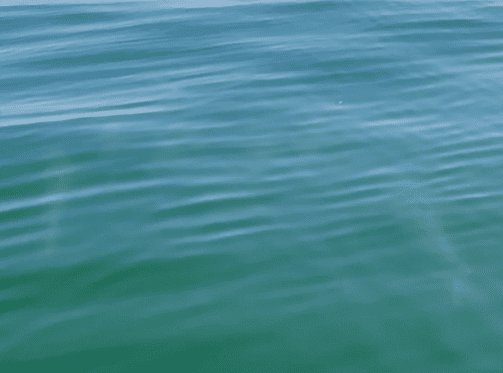Typically found in warmer climates, the iconic sport fish is a rare visitor to the state.
On August 1st, while scouting for red drum near the Hoopers Island Lighthouse, Capt. Tom Weaver noticed a disturbance in the flat, calm waters a few hundred yards away. Following the wake, he shut off his motor and saw large shapes beneath the surface. Recognizing them from his fishing experiences in the Florida Keys, Weaver was surprised to encounter tarpon so far north.
“When you leave Annapolis, you don’t expect to find tarpon an hour and a half later,” said Weaver, who operates the charter business Fish With Weaver. “It took a moment for my brain to process.”
Tarpon are known for their impressive stamina and ability to leap out of the water, making them a prized catch for sport fishers. In a video recorded by Weaver, the 6-foot-long fish, weighing between 80 and 100 pounds, can be seen lurking just below the surface. Despite getting a bite, Weaver didn’t have the right gear to reel one in. “We were not prepared to see tarpon,” he admitted.
Erik Zlokovitz, the recreational fisheries outreach coordinator for the Maryland Department of Natural Resources (DNR), noted an increase in tarpon sightings in Maryland this summer. “Historically, we’ve seen tarpon in Maryland’s section of the bay, but the recent number of sightings is unusual,” Zlokovitz said. “This is the first year we’ve received multiple reports of schools of tarpon, not just isolated individuals.”
While tarpon are known to enter the southern Chesapeake Bay during the summer, encounters in Maryland waters are rare. In 2019, DNR staff released a small tarpon near Kent Island, and in July 2020, angler Brittany Growe hooked a 6-foot tarpon near Smith Island. Historical records also mention occasional sightings, with reports dating back to 1878.
Weaver shared his experience with others, discovering that two other guides had also seen tarpon in Maryland recently. He recalled seeing a school of tarpon in the Bay last year and noted that sightings have only been reported in the past two years.
Zlokovitz mentioned that it’s too early to determine if the increase in sightings is an anomaly or the beginning of a trend. Rising water temperatures in the Chesapeake Bay, influenced by climate change, may be attracting tarpon and other warm-water species like Florida pompano and cobia. DNR scientists suggest that tarpon could be moving north in search of food sources like menhaden and shrimp, or it could be part of a larger migration pattern.
Water temperatures in the Chesapeake Bay have risen by 1 to 2 degrees Fahrenheit since 1999, with this summer recording above-average temperatures near Hoopers Island. Weaver speculated that the tarpon were feeding on blue crabs and regretted not having fly rods on board. He plans to be better prepared next time, with a dedicated tarpon setup.
“I’m going to have a dedicated tarpon rig and fly on the boat,” Weaver said. “I won’t make that mistake again.”

Tarpon are generally not considered good for eating, and DNR officials recommend that anglers pursue them for catch-and-release fishing only.
